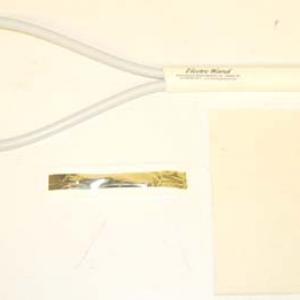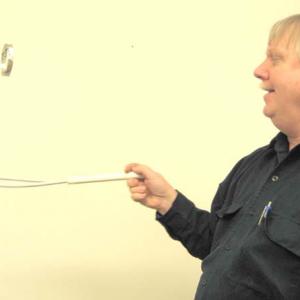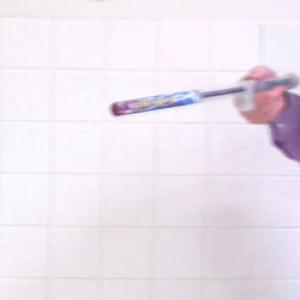College of Liberal Arts & Sciences
5A20.31 - Electro Flyer
Rub the wand with the cat's fur to charge it. Gently drop one of the Mylar bands onto the wand. The band should touch the wand and then jump away. You should be able to keep the band levitated by keeping or moving the wand under it.
You can do the same with a charged rod and a feather with a small quill backbone. Charge the rod and then rub the feather along the rod to get it charged. Charge the rod again and then let the feather go above the rod. The feather should float about 6 inches above the rod and be very easy to keep there.
The Fun Fly Stick comes with its own flying toy shape.
- Carson I. A. Ritchie, "Flying Feather", Making Scientific Toys, p. 148.
- John E. Peterson, "No Batteries, Strings, or Wires!", TPT, # 4, April 1985, p. 223.
- Grant Mellor, "The "Magic" of an Electric Charge", Flying Tinsel, 1993, p. 8.
- Tik L. Liem, "The Levitation Act", Invitations to Science Inquiry - Supplement to 1st and 2nd Ed. p. 86.
- Herb Strongin, “Using Air and Static Electricity to Overcome Gravity“, Science on a Shoestring, p. 127.
Disclaimer: These demonstrations are provided only for illustrative use by persons affiliated with The University of Iowa and only under the direction of a trained instructor or physicist. The University of Iowa is not responsible for demonstrations performed by those using their own equipment or who choose to use this reference material for their own purpose. The demonstrations included here are within the public domain and can be found in materials contained in libraries, bookstores, and through electronic sources. Performing all or any portion of any of these demonstrations, with or without revisions not depicted here entails inherent risks. These risks include, without limitation, bodily injury (and possibly death), including risks to health that may be temporary or permanent and that may exacerbate a pre-existing medical condition; and property loss or damage. Anyone performing any part of these demonstrations, even with revisions, knowingly and voluntarily assumes all risks associated with them.



